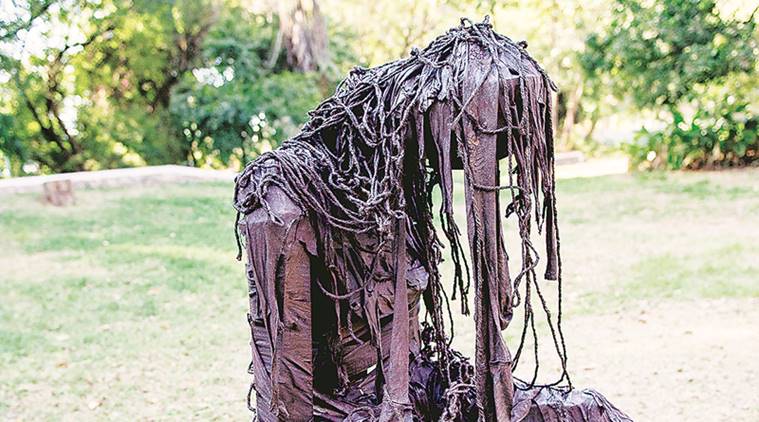Written by Alifiya Khan |Updated: February 2, 2019 1:08:52 am
Looking at the Other Side
Khoj is an international artists organisation that plays a central role in the development of experimental, interdisciplinary and critical contemporary art practice in India and South Asia.

Neutral and yet makes a statement. Inclusive but divergent at once. These and some more ideas are what the latest edition of the Pune Biennale will work with as it unfolds in November and December. Announcing the launch of the biennale last weekend at the Monalisa Kalagram was Pooja Sood, director of Khoj, which will act as a curator of the bi-annual citywide celebration of art. The central idea of the exhibits and artistic ideas is — Difference.
In its fourth edition, founder-director of Pune Biennale, Kiran Shinde, describes it as a platform for the people of the city to come together to see, enjoy, learn and engage with art in public spaces. “It is a cultural movement of the city, by the city, for the culturally vibrant city,” he says.
Khoj is an international artists organisation that plays a central role in the development of experimental, interdisciplinary and critical contemporary art practice in India and South Asia. Sood explains that the central theme is unpacking the differences that exist in personal, poetic, political, gendered, ecological, legal, extra–legal and economic areas.
As she called for entries and ideas from artistes on collaborations, Sood left the theme open to interpretation. “This theme, ‘Difference’, could mean so many things and each one is free to explore it. We really want a mix bag of diverse ideas to come to us and ones that reflect the contemporary aesthetics and the vibrancy of this city,” she says. Sood belonged to Pune before she left a few decades ago for her art practice. She speaks about how the city had grown from one Poona into different Punes, and stresses on the challenge before the
biennale to capture and cater to these differences too.
biennale to capture and cater to these differences too.
“A biennale is the celebration of art for an entire city. If you see Kochi, the entire town comes alive during the biennale and you see the buzz around it. In the last three editions, the festival was site-specific because the city itself is so much bigger in comparison. But Pune now, the way it is, needs a different treatment. Like bringing the Pune Cantonment to the heart of Pune city or the newer population of Aundh-Baner is difficult. So, maybe, we can think of hosting the biennale events in different parts, rather than selecting one area as central venue,” she adds.
Announcing that the Pune Biennale 2019 will include site-specific art, which will be intellectually and physically accessible, inclusive and transformative, she spoke of the importance of collaborative events to be held around the biennale. “A lot of people say the buzz around the biennale in previous editions was missing. Look at other biennales, like the Ceramic Art one which happened in Jaipur recently. The galleries which weren’t even participating in the main events had so many parallel and complimentary events around it that helped in creating this buzz and excitement. I think that is lacking here and we want galleries, artistes and spaces to come forward with ideas on collaborative events which are so important,” says Sood.
Giving details of the parallel programme, the biennale team said it could include curated film festivals or shows, plays engaging with the rich and diverse theatre traditions of Pune, and dance programmes engaging with dance histories of the region as well as contemporary dance forms in Pune. Also in the pipeline are curated music events, vachanlay or reading rooms and children’s reading corner, and a host of events around food, such as installations looking at food art and history of food in the region.






















No hay comentarios:
Publicar un comentario